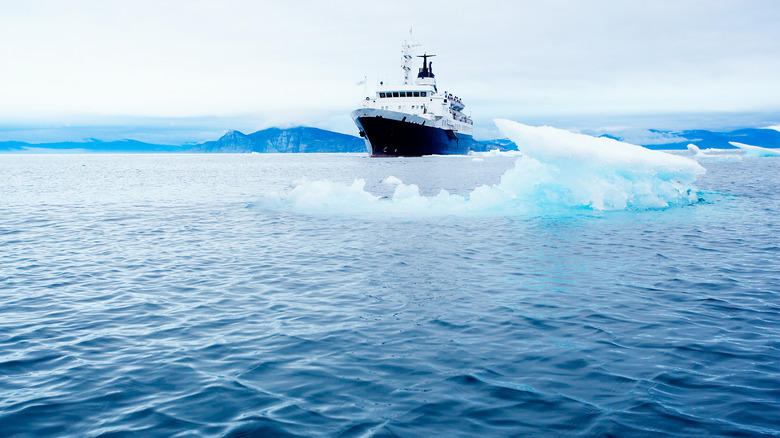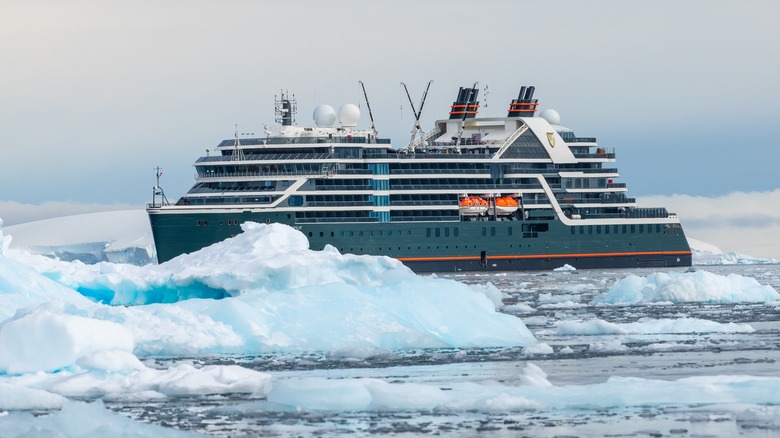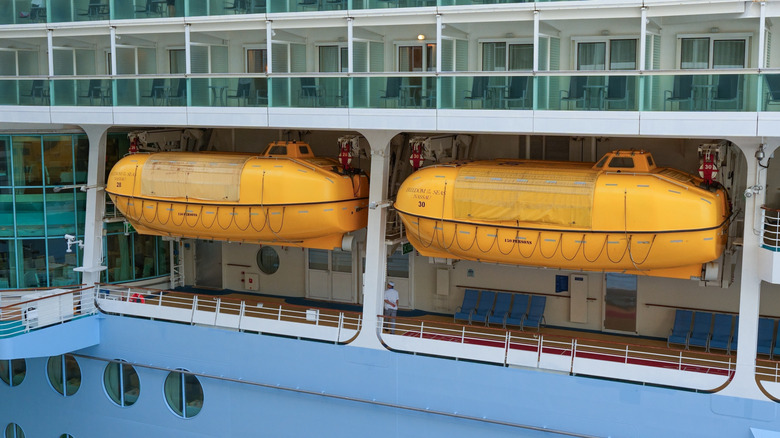Do Modern Ships Still Hit Icebergs? (And What Would Happen If They Do)
If you're unfamiliar with the story of the Titanic, the infamous "unsinkable" ocean liner that, well, sank in 1912, you either really hate disaster stories, ships, or movies, or you're like Captain America and have been on ice for decades (if you don't understand any of these references, we really can't help you). Looking back on history, it was supposed to be an indestructible invention, until it was discovered that it wasn't.
The largest ship in the world at the time, the Titanic, went down in the early morning hours of April 15 after hitting an iceberg. In the early 20th century, icebergs were a known but little-understood threat. Sailors knew they were out there, especially in the North Atlantic in early spring, but didn't understand how they behaved. We remember the story of the Titanic because of a combination of factors — the fact that the media called it unsinkable, the amount of time it took to sink, the famous passengers, and the reality of too few lifeboats and a high death toll.
But could it happen today? Do modern ships even hit icebergs anymore? Many scientists believe that there are more icebergs now than there were 100 years ago. The oceans are warming and glaciers are melting faster, and that warmer water also hastens a process known as calving, wherein smaller icebergs are carved out of larger ones. Thus, there are plenty of icebergs in the sea, and yes, modern ships do still strike them occasionally. Luckily, new technology and scientific understanding have made this rare event even more unlikely.
The International Ice Patrol
Iceberg incidents are rare today, though a Norwegian Cruise Line ship hit one in 2022, sustaining damage that cut the voyage short but not causing any injury or death. In 2007, the Canadian cruise ship MS Explorer struck submerged ice that was thought to be part of an iceberg and sank in the Southern Ocean. The ship was lost, but there were no injuries or fatalities.
If you're wondering what would happen if the Titanic had sunk today, it's safe to say it would likely be a very different story. In the wake of the disaster, multiple nations banded together to form the International Ice Patrol (IIP). It is tasked with monitoring the danger of icebergs in the North Atlantic and providing warnings to help keep ships out of danger. In the U.S., it is part of the Coast Guard and is partnered with the Department of Homeland Security.
When it was first created, the IIP used ships to hunt icebergs, but after World War II, it began using planes to more easily survey from the air. Today, the organization has bi-weekly aerial reconnaissance missions that last nine days at a time from February through July every year. These missions collect data and combine it with information collected from passing ships and oceanographic equipment, like buoys, to provide information about where the icebergs are headed and how long it will take for them to melt.
Advanced tech that helps keep ships safe
If you're wondering how the Department of Homeland Security comes into play, its research and development arm, called the Science and Technology Directorate, takes the search for icebergs away from Earth and into space. In a bid to reduce the need for aerial ice surveillance, which costs the Coast Guard more than $10 million annually, the Coast Guard is using images from satellites to monitor ice. Scientists called Ice Analysts use a combination of Synthetic Aperture Radar (SAR), visible, and infrared remotely sensed imagery to find the icebergs and monitor their paths.
Many larger ships also have technology onboard to help with ice detection, including radar, sonar, and satellite technology. Smaller ships and boats, however, may not have this tech and will rely on ice reports. If a ship does unexpectedly strike ice and remains afloat, it will need to be assessed for damage. The Norwegian Cruise Line ship that struck ice was taken out of service temporarily, resulting in some disappointed vacationers, but it was soon repaired and put back into service.
If a ship is damaged to the point of sinking, it shouldn't look like a scene from a disaster movie, at least when it comes to getting everyone safely off the ship. The sinking of the Titanic in 1912 changed maritime law forever. Ships must have enough lifeboats and life rafts for everyone on board, and 75% of that capacity must be lifeboats as opposed to life rafts, meaning everyone on board has a safe place in case of evacuation.


